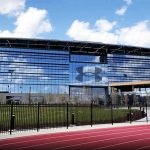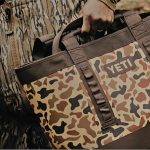Industry retailers continued their momentum in building a stronger bottom line in the second quarter, again easily outpacing the growth in the sales line for the period. Even after stripping out the benefits of acquisitions and excluding the impact of integration of some of those acquisitions, profits for the retail end of the industry increased at a three-to-one margin over growth in sales for the second quarter.
Overall sector income was up 64.3% for the second quarter, while sales grew just 12.2% for the period. The largest increase in the profit line came in the Specialty channel, which increased 92.1% for the period. The Catalog/Team/Web channel, which Sports Executive Weekly broke out as a separate segment for the first time this quarter, led the gains in the sales line on a percentage growth basis, increasing 24.9% for the quarter.
The growth in income in the Specialty channel was aided by the inclusion of Hat World in the Genesco numbers for the first time, but also received a nice boost from a tax benefit at Foot Locker during the quarter which more than offset the pain resulting from the retailers acquisition of Footaction.
Hat World added $7.5 million to Genescos operating profit line and added $58.0 million in sales for the period. Excluding Hat World, which was acquired in early April, Genesco would have seen sales increase 4.7% for the quarter to $188.0 million and would have posted a $425,000 pre-tax loss for the period (SEW_0434).
Footaction impacted the Foot Locker bottom line by $10 million, or seven cents per diluted share, but the tax benefits and exams boosted net income by $37 million, or 24 cents per diluted share (SEW_0434). Excluding the $104 million in sales contributed by the remaining 349 Footaction stores, FL sales were up only 3.6% to $1.16 billion for Q2, but gross margins would have increased 100 basis points to 30.5% of sales. Footaction GM was just 12.5% of sales as the company cleared broken sizes and aged goods.
Excluding the Hat World and Foot Locker issues and benefits, profits in the Specialty channel still increased a healthy 42.7% for the period while sales grew just 7.3% in the quarter.
From a pure organic growth standpoint, it was again The Finish Line and Pacific Sunwear that again led the way for the period in both comp sales and net income growth.
FINLs most recent results were posted for the period ended 5/29 so the numbers are a bit skewed from the other retail results for the quarter. Finish Line saw sales growth moderate a bit for its fiscal second quarter ended August as comps rose 11% in June, but gained just 6.0% in July and 4.0% in August. Total sales for the most recent quarter increased 15.3% to $312.2 million from net sales of $270.8 million in Q2 last year.
Still, the sales results appear to overshadow the U.S. turnaround at mall rival Foot Locker Inc. even as it attempts to get back into growth mode through increased allocations of Nike marquee product.
Return on Sales, which is represents income as a percent of sales, was 4.8% for the Specialty channel in Q2, up nearly 190 basis points from the 2.9% ROS posted in Q2 last year, but down 200 basis points from the 6.8% level achieved in the fist quarter this year.
In the Sporting Goods channel, all lines were heavily impacted by Garts acquisition of The Sports Authority that resulted in a new 386 store TSA national chain. SEW had to estimate the sales for the combined entity last year since Q2 2003 was defined as a “lost quarter” for the Old TSA and no sales figures were reported (SEW_0435).
The $577.8 million figure used for last year was extrapolated based on SG&A data provided by New TSA management. However, comp store sales for the combined entity, which were provided by management, were down 3.8% for the quarter on top of a 0.6% comp decline at Gart last year and a 5.0% decrease at the Old TSA.
While the New TSAs sales line was not impacted by the merger deal, the income line was again hurt by integration costs. Excluding the $5.2 million impact of merger costs this year in second quarter and a $1.5 million hit in the year-ago period, the new TSA net income would have doubled for the period, due in part to the benefits of shared administrative and buying costs.
Excluding the impact of TSA, the Sporting Goods channel would have seen profits increase 40% for the period.
The channel also saw two new entrants in the chart for this years Q2, with both Cabelas and Gander Mountain making strong contributions to the growth in the channel for the quarter. Cabelas hurt the profit growth for the channel, due to a charge taken in their financial business (SEW_0431), but Gander made progress in cutting their seasonal loss and would have cut the loss in half if not for a change in the posting of vendor rebates (SEW_0434).
Dicks Sporting Goods was again the key performer here, posting double-digit gains in both sales and net income.
Return on sales for the Sporting Goods channel was up slightly to 2.8% for the period versus 2.4% of sales in the year-ago period.
The sector-leading sales increase in the Catalog/Team/Web channel can be attributed to acquisitions as well. Collegiate Pacific moved this year to solidify its presence in the team dealer market, acquiring Kessler Team Sports and Dixie Sporting Goods in deals that are expected to deliver $48 million in incremental sales for the company, effectively tripling their current base business volume. Excluding Collegiate Pacific, sales for the channel would have been up 16.0% for the period.
In the Family Footwear channel, ROS was flat to last years Q2 numbers as the retailers in the channel relied heavily on pure organic growth for their sales and profit gains. While growth here lagged behind the other channels, a quick review of both public and non-public companies would indicate that sales for the channel increased roughly 9.0% for the period.















